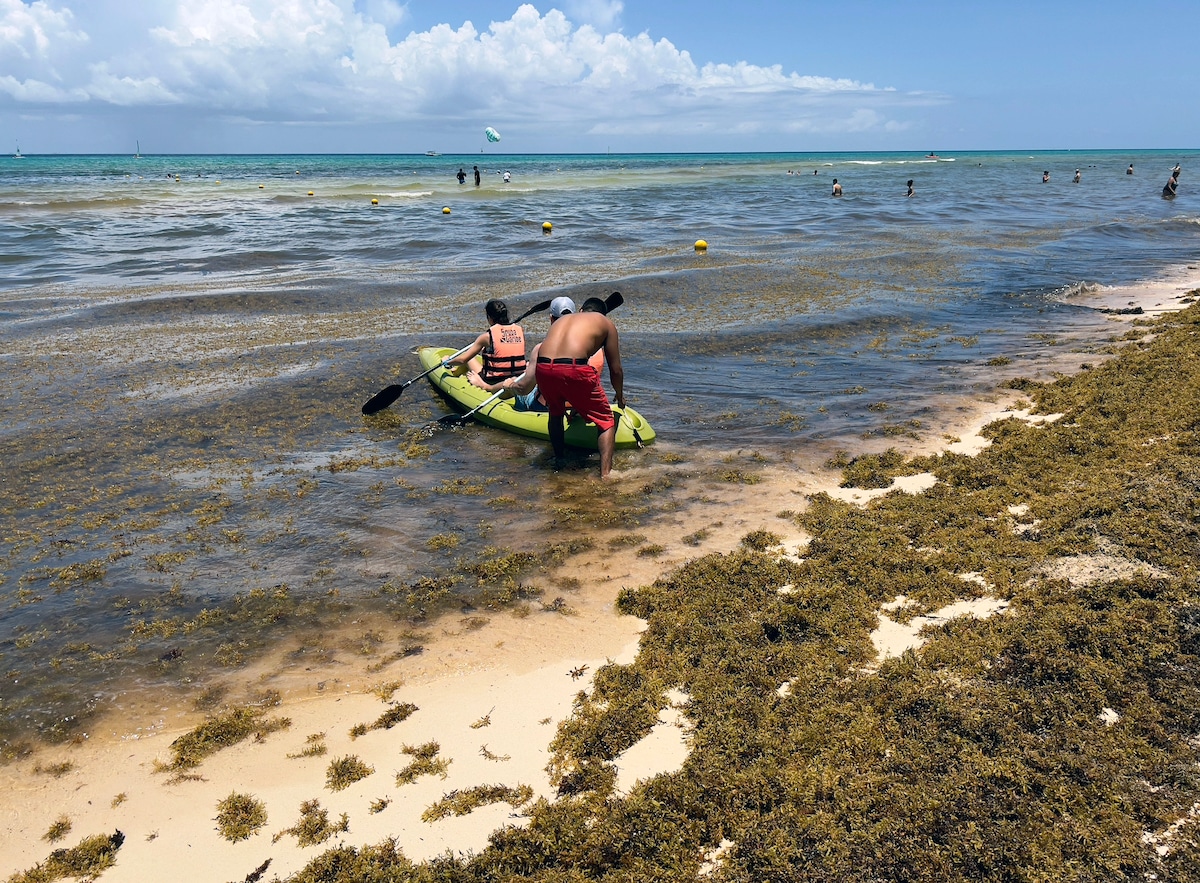Products You May Like
A beach covered with sargassum seaweed, in Playacar, Playa del Carmen, state of QuintanaRoo, Mexico, on June 26, 2022. DANIEL SLIM / AFP via Getty Images
 Why you can trust us
Why you can trust us
Founded in 2005 as an Ohio-based environmental newspaper, EcoWatch is a digital platform dedicated to publishing quality, science-based content on environmental issues, causes, and solutions.
Across Caribbean coasts, sargassum is covering the beaches. This smelly seaweed doesn’t just stink — it also kills fish and other marine life and impacts local economies by making activities like kayaking and snorkeling nearly impossible.
In June, the amount of sargassum broke the all-time record for the amount of this brown seaweed in the Atlantic, which then floated down into the Caribbean Sea in unprecedented amounts, by 20%, University of South Florida’s Optical Oceanography Lab reported. This year, seaweed levels reached over 24 million tons, far higher than the previous all-time high in 2018.
This seaweed floats in bundles on waters, and at normal levels, it provides food and habitat to many species, including various types of fish, crabs, sea turtles, birds and more. While scientists are still determining the cause of rapidly increasing levels of sargassum, the United Nations’ Caribbean Environment Program speculates several possible influences, including rising water temperatures and runoff of fertilizers, sewage, and other waste and nutrients.
“This year has been the worst year on record,” said Lisa Krimsky, a university researcher with Florida Sea Grant. “It is absolutely devastating for the region.”
According to Krimsky, the floating masses of seaweed can impact water temperatures and pH levels as it decays, harming seagrasses, coral and sponges that are “smothered” by the large amounts of sargassum. Sea turtles can also become entangled in the algae or struggle to lay their eggs ashore with the sargassum covering beaches.
As the sargassum washes up on shores, it begins to rot, releasing noxious gases such as hydrogen sulfide gas, which smells like rotten eggs. The CDC warns that hydrogen sulfide gas exposure can cause irritation to the eyes and respiratory system.
Some countries have tried using heavy machinery to remove the sargassum from beaches, but scientists warn that this can destroy sea turtle nests and cause erosion. It’s also an expensive method.
Larger than normal amounts of sargassum in the region were first noticed in 2011, and it has become a recurring problem year after year. Aside from the impacts on local wildlife and risks to human health, the sargassum boom has also hit local economies that make money from tourism this time of year.
Some resorts on Union Island have had to close for up to 5 months. Oswen Corbel, owner of St. Martin-based Caribbean Paddling, has lost $10,000 or more from closing this business because of the seaweed masses.
“Maybe I should give up… Sometimes I think I should go into the mountains and herd sheep, but this is what I know to do,” Corbel said. “What’s next? We had Hurricane Irma, we had COVID, we had the sargassum, and now I’m pretty scared of global warming.”
The Biden administration declared a federal emergency for St. Croix in the U.S. Virgin Islands in July after sargassum was clogging the machines at a nearby desalination plant, leaving residents without enough water during a drought. U.S. Virgin Islands Gov. Albert Bryan has asked the Biden administration to declare a federal emergency for the three-island territory, to no avail.
Subscribe to get exclusive updates in our daily newsletter!
By signing up, you agree to the Terms of Use and Privacy Policy & to receive electronic communications from EcoWatch Media Group, which may include marketing promotions, advertisements and sponsored content.
